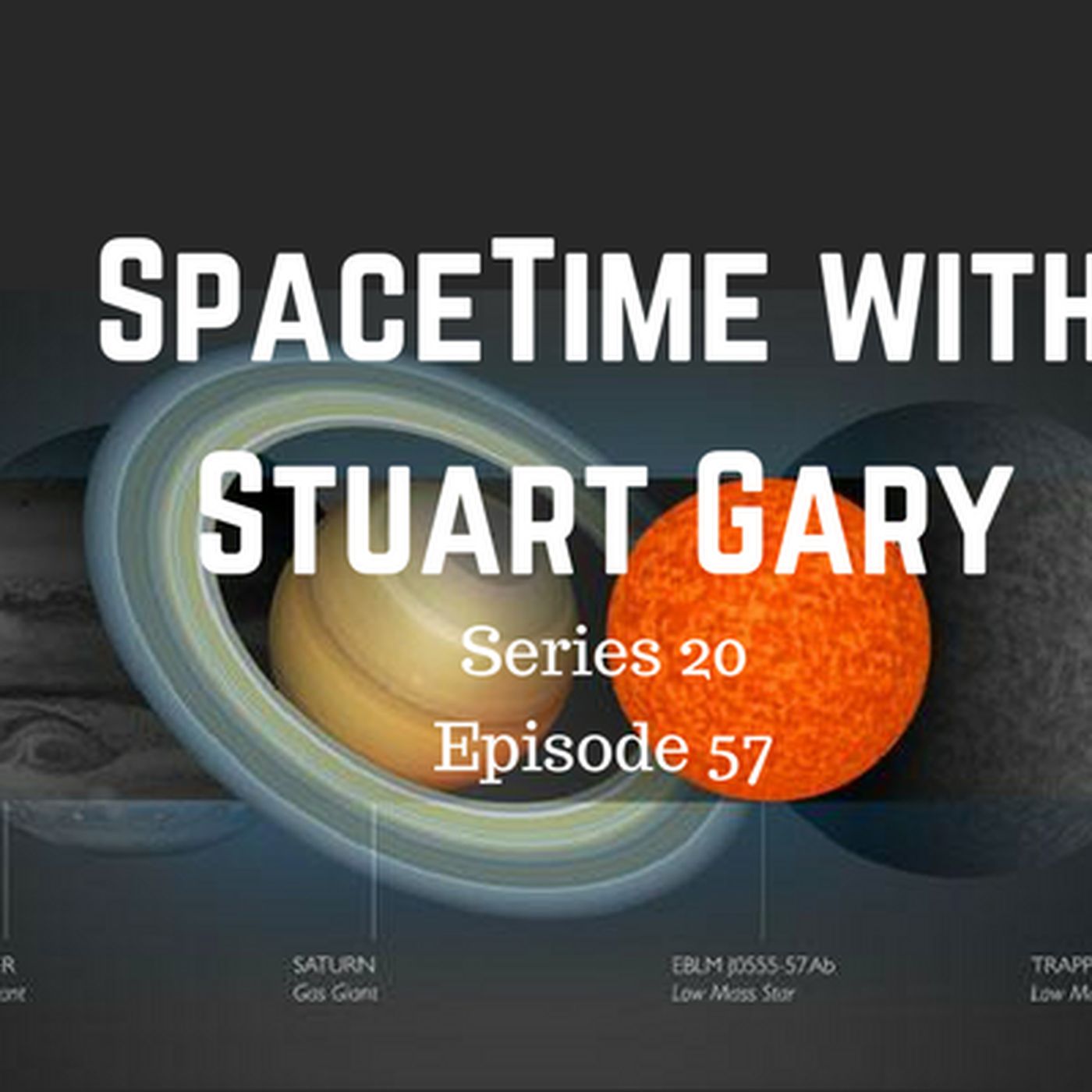57: The smallest star ever discovered

Thank you to our growing Patreon group. Your support is very much appreciated. You can help support SpaceTime too, by becoming a patron...and we have rewards for you. Do your bit to keep Stuart fed and housed... details at our Patreon page... https://www.patreon.com/spacetimewithstuartgary\xa0Stream episodes on demand from www.bitesz.com (mobile friendly)\xa0*The smallest star ever discovered Astronomers have identified what could be the smallest star ever discovered. The star -- called EBLM J0555-57Ab -- was detected in a triple star system located some 600 light years away in the Southern Hemisphere constellation Pictor the painter.\xa0*New brown dwarf discovered Citizen scientists have helped NASA identify a never before seen Brown Dwarf. The discovery is the first was made as part of NASA\u2019s Backyard Worlds: Planet 9 citizen science project.\xa0*Why black holes only come two sizes A new study may have finally answered a question which has been puzzling astronomers and physicists for half a century \u2013 namely why black holes only seem to come in two sizes -- stellar mass and supermassive. What\u2019s happened to all the intermediate-sized black holes \u2013 those with a few thousand times the Sun\u2019s mass. Now a new study has come up with a possible answer \u2013 time.\xa0*Strange signals from outer space Astronomers at the Arecibo radio telescope in Puerto Rico have detected strange signals originating from a nearby star system. The mysterious radio signals appear to be coming from Ross 128 a small red dwarf star about 11 light years away.\xa0*The Larsen C trillion tonne iceberg A one trillion tonne iceberg - one of the biggest ever recorded -- has calved away from the Larsen C Ice Shelf in Antarctica. The 5800 square kilometre chunk of ice \u2013 now named A68 \u2013 is twice the size of the Australian Capital Territory, as large as the US state of Delaware and contains twice the volume of Lake Erie, one of the Great Lakes.\xa0*SpaceX launches its heaviest geostationary orbital payload yet A SpaceX Falcon 9 rocket has successfully launched the heaviest payload ever carried by the company into geostationary orbit. The 6070 kilogram Inmarsat-5 F4 telecommunications satellite is at the top end of the Falcon 9\u2019s lift capabilities..\xa0Subscribe, rate and review SpaceTime at all good podcasting apps\u2026including iTunes, Google Podcasts, Stitcher, Pocketcasts, Podbean, Radio Public, Tunein Radio, google play, etc.Email: SpaceTime@bitesz.com\xa0Join our mailing list at http://www.bitesz.com/join-our-mailing-list\xa0#astronomy #space #science #technology #news #astrophysics #NASA Learn more about your ad choices. Visit megaphone.fm/adchoices
\xa0See acast.com/privacy for privacy and opt-out information.
Become a supporter of this podcast: https://www.spreaker.com/podcast/spacetime-with-stuart-gary--2458531/support.